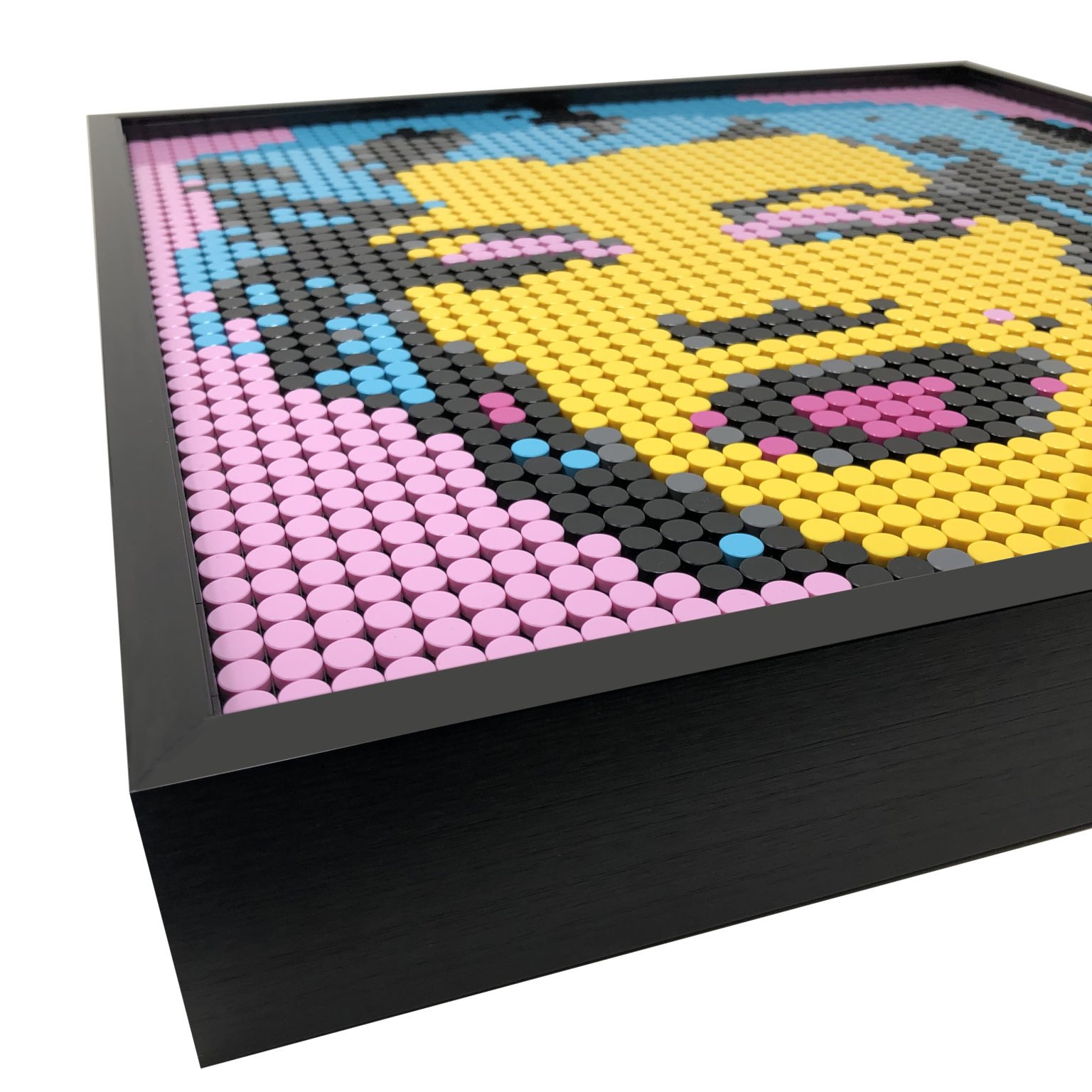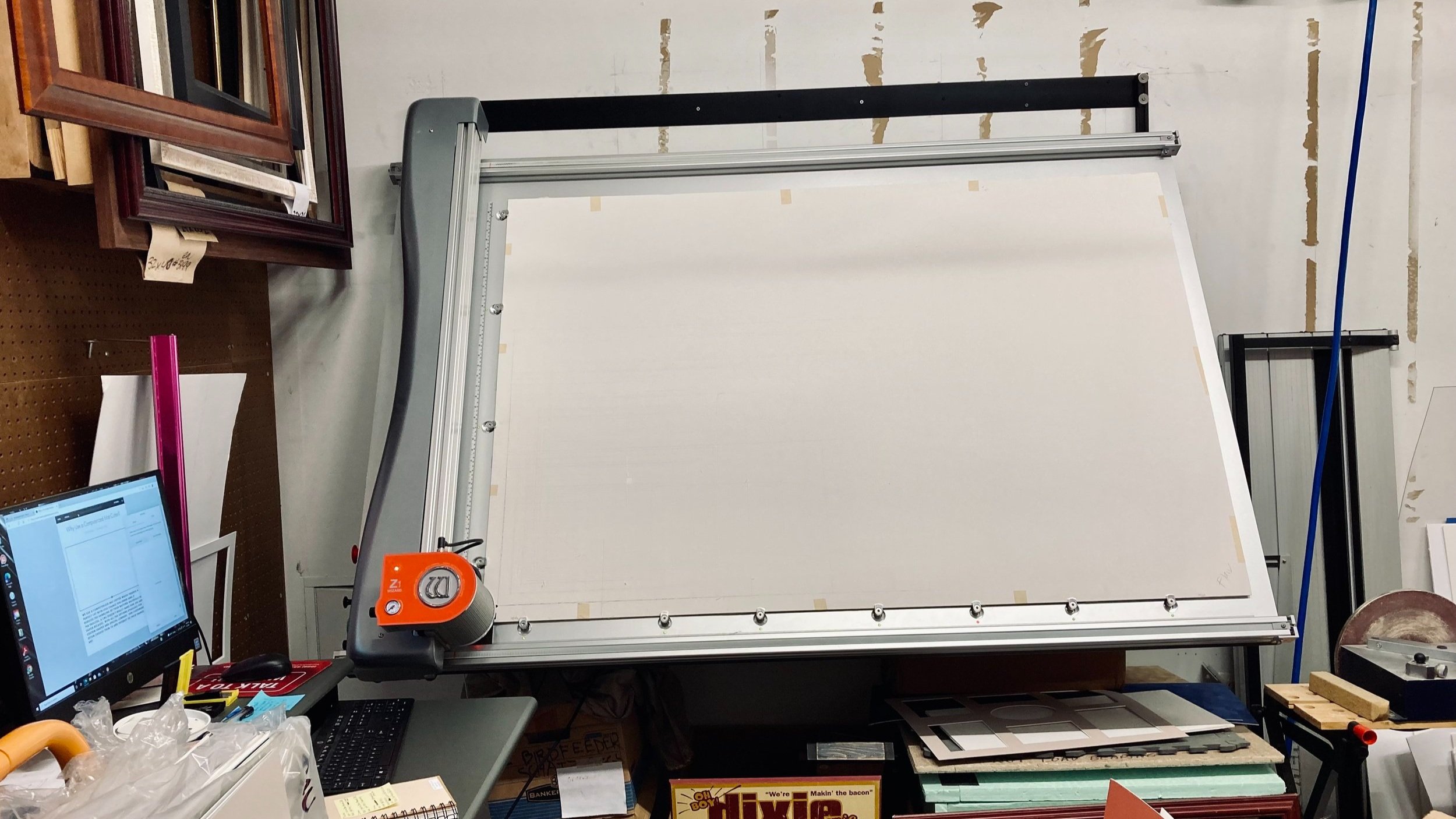This is actually a pretty common reaction to hearing the cost of anything built by a professional to custom specs. It’s not only picture frames that can seem pricey… Think of handmade one-of-a kind furniture, tailored clothes, handmade shoes, fine art, tattoos, designer eyeglasses, hiring a chef for an evening… anything at all that requires a professional to help you do your project right! It can even be the plumber or the electrician, the cabinet maker or tile installer, the auto mechanic who puts superior brakes on your car, the waiter or waitress who delivers exceptional service, or any number of professions that are skilled and capable of doing the work for you beautifully. Do these things sometimes cost a bit more than off the shelf stuff? Sure, but they’re worth it!
That being said, picture framing is perceived as so expensive for many reasons. So let’s talk about value, which is really the operative word here! Value is a word that is synonymous with expensive, but the meanings are sometimes almost opposites. Where “expensive” typically means something priced above its actual worth, “value” means it’s worth what it’s priced. Picture framing is then a valuable thing to do, not an expensive thing to do – because when it’s done right it really does add value to the item that’s being framed. Sure, some throw-away items are not worth it. That’s what thumbtacks and dollar store frames are for! A great frame not only preserves and protects its contents, it is a work of art in its own right. This awesomely designed work of framing art enhances and elevates the object it frames. We once heard it said that a frame is a halo on the art and Master artist Edgar Degas once said, “The frame is the reward of the artist”. A good frame isn’t just a means to an end… hanging a picture is only a little part of what the frame does. Frames give a piece its character, its provenance, and help to tell the story of the art or object inside – all the while quietly serving and protecting the frame contents. It takes a professional who’s been trained in the art of design, and the technical aspects of framing, to make a beautiful frame that protects its contents. These items aren’t just glued in! They’re usually attached by hand using the least invasive methods possible and the goal is to do no harm.
Let’s talk about picture framers. Independent picture framers are a very unique group of artists and craftspeople who have a desire to help you display your treasures. They’re not out to get you, they’re not getting rich; but they are making a living! Now… Some of the issues that are important to framers are preservation, decoration, and engineering/technical aspects of how to hang something on the wall.
A good framer will discuss all of these elements with you and give you suggestions to really show off your frame-able item. They’re not going to automatically assume you want the cheapest option, because that isn’t always the best option! They’ll recommend glass that prevents fading of the mats and contents of the frame; they’ll show you a frame that’s the right size and color to really show off the items in the frame. What they’re after is the very best display for your items. That doesn’t mean it HAS to cost a lot though! If you let your framer know you’re working with a budget, they will do their best to show you selections and offer suggestions of ways to work with that budget. Many independent framers offer good quality, affordable framing options. Just ask them!
A great framer is like a great hair stylist, really. They make you look SO good! Just like a great haircut compliments your face and showcases your style, a great frame compliments your frame-ables and shows off their best assets. You don’t want to trust it to just anyone. It’s important to shop around and get to know who’s who, especially in picture framing. You’d be amazed at the talent out there!
But let’s talk about something serious. Doing your own framing using ready mades or cheap internet services is kinda like giving yourself a haircut with regular hair clippers. It will be passable, and if you practice a few times it might even look really good… but at the end of the day at best it looks like everyone else’s home haircut. Some days, this is perfectly fine and for some folks, it is good enough. But we all know that if you want it to be really special you go to a pro. Or if it comes out really bad, the pro is there to fix it for you.
A professional framer is an artist (usually a humble one). They want to enhance the object or art being framed. So the frames they help you choose will really look great and unique to the project! Why put a boring white mat on EVERYTHING you frame? Why only black or gold or white or brown? Yawnsville! We aren’t living in the 80’s anymore, so choose some frames that are really awesome and unique! Go to a real, local, independent framer and see what else there is out there. Talk to them. See what they suggest. A whole world of colors, textures, fabrics and papers is there for you.
It may take a little time to find a framer you love – but when you do they will love you back! You will never regret investing in the things you frame. People will be really impressed with your collection and your awesomely framed items will tell your story for you – just like the books on your shelf do… if you are one of those people who still has physical books, that is!




















